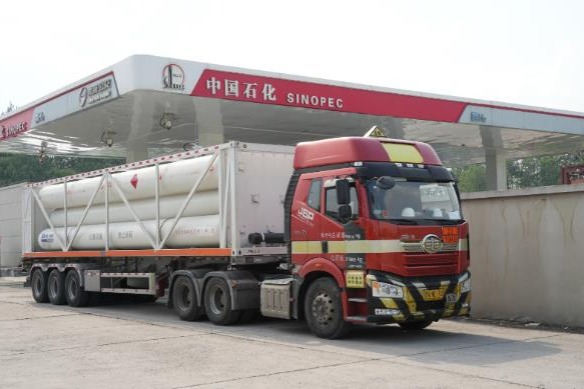Energy Transitions Commission Releases Briefing on Global Trade Challenges in Energy Transition

The Energy Transitions Commission (ETC) has released a new briefing note titled, "Global trade in the energy transition: principles for clean energy supply chains and carbon pricing." This document examines how technological advancements and carbon pricing mechanisms can significantly accelerate the global shift towards cleaner energy. However, it also highlights potential roadblocks, such as growing concerns over highly concentrated supply chains and the perception of carbon border adjustments (CBAMs) as protectionist measures, which could impede progress. The ETC's briefing proposes a strategic way forward on two critical trade-related fronts: establishing principles for developing domestic clean energy supply chains and fostering global agreement on carbon pricing and CBAMs to decarbonize hard-to-abate sectors.
The past decade has witnessed a dramatic fall in the cost of several clean energy technologies. For instance, solar PV module prices have plummeted by 94% since 2011, and lithium-ion battery prices have decreased by over 92% since 2010 while simultaneously doubling in energy density. Notably, in 2024, almost two-thirds of electric vehicles sold in China were reportedly cheaper than their internal combustion engine counterparts of equivalent size and quality. China has been at the forefront of this progress, achieving dominant market shares in multiple clean technologies. This leadership is primarily attributed to its strategic vision, access to low-cost capital, continuous technological innovation, and dynamic entrepreneurship, rather than solely to low labour costs.
In response to this market concentration, many countries are now seeking to diversify their clean energy supply chains through strategies like nearshoring. These efforts are driven by concerns about energy security and a desire to foster local value creation and employment. However, the ETC cautions that poorly designed nearshoring policies could inadvertently add significant costs to the energy transition, potentially slowing it down.
To guide an optimal approach to developing domestic supply chains and nearshoring, the ETC proposes six key principles for policymakers:
1. Diversification over Autarky: Aim for diversified supply chains rather than attempting complete self-reliance or autarky.
2. Clarify Security Dimensions: Clearly differentiate between various dimensions of security, such as economic security versus national security, and understand their differing implications across various sectors.
3. Tailored Technology Policy: Customize policies based on specific technologies, focusing nearshoring efforts on sectors where cost-competitive domestic production can realistically be achieved.
4. WTO-Compliant Tariffs: Ensure that any application of tariffs is based on a factual and thorough analysis of current subsidies, in full compliance with World Trade Organization (WTO) rules.
5. Focus on Value-Add and Employment: Prioritize the geographical location of employment and value-addition rather than focusing strictly on the ownership of production facilities, recognizing that inward investment can be a major driver of technology transfer and local development.
6. Collaboration with China for Climate Finance: Actively work with China to increase and channel climate finance flows towards lower-income countries, thereby supporting the accelerated deployment of clean technologies where they are most needed.
Adair Turner, Chair of the Energy Transitions Commission, commented on this, stating, "In an ideal world, free from geopolitical tensions or supply chain risks, China's stunning technological progress and cost reduction would be welcomed as enabling a faster and cheaper energy transition worldwide. But there are economic and security-related reasons for seeking to develop domestic supply chains. Well-designed policy can ensure that those objectives are met in a way that drives further technological progress and cost reduction."
The briefing note also delves into the critical role of carbon pricing. While some low-carbon technologies are already cost-competitive in certain areas, sectors that are "hard to abate" – such as steel, cement, chemicals, and shipping – will incur a "green cost premium" when adopting available decarbonisation technologies. Carbon pricing is therefore essential to make decarbonisation economically feasible in these industries.
Currently, 53 countries have implemented some form of carbon pricing, covering over 20% of global emissions. However, only the European Union has established carbon prices high enough to significantly influence the economics of decarbonisation in these challenging sectors. A major concern is that if one country or bloc, like the EU, imposes carbon prices on energy-intensive, internationally traded goods, production may simply shift to countries that do not have equivalent carbon prices. This phenomenon, known as carbon leakage, would result in no net reduction in global emissions.
The ETC argues that until a globally agreed carbon pricing system is in place for these hard-to-abate sectors, Carbon Border Adjustment Mechanisms (CBAMs) are essential. These mechanisms are not protectionist, according to the ETC, but rather a necessary tool for developed countries to take responsibility for the emissions embedded in the goods they import. The ETC therefore strongly supports the EU's implementation of a CBAM and its recent commitment to make the mechanism more robust.
The ideal long-term solution would be globally agreed carbon prices applied consistently across hard-to-abate sectors. The International Maritime Organization's recent agreement on a pathway towards this for shipping is cited as a crucial step. To foster progress towards this broader international agreement, the ETC suggests several actions:
1. International Standards for Carbon Intensity: Seek agreement, for instance through the WTO, on international standards for the accurate measurement of carbon intensity in products.
2. Technical Assistance for Developing Countries: Provide technical assistance and capacity building to developing countries that are seeking to deploy their own carbon pricing systems.
3. Revenue Allocation for Climate Finance: Allocate some of the revenues generated from mechanisms like the EU CBAM to support climate finance flows to lower-income countries, assisting their transition to cleaner economies.
Faustine Delasalle, Vice-Chair of the Energy Transitions Commission and CEO of Mission Possible Partnership, emphasized the broader context: "The world is entering a new industrial era powered by clean energy. Clean industrial projects are flourishing in diverse geographies, opening opportunities for new trade dynamics. But well-designed policies, including carbon pricing, supply-side financial incentives, and demand-side regulations are essential to make projects viable and precipitate final investment decisions."
In essence, the ETC's briefing, "Global trade in the energy transition: principles for clean energy supply chains and carbon pricing," aims to provide a clear framework and actionable principles for policymakers to navigate the complex interplay of trade, technology, and climate action in the ongoing global energy transition.
You may also like...
The Economic Cost of Loneliness

Loneliness is silently draining billions from the global economy. This essay uncovers the hidden financial toll of socia...
Lando Norris's Fiery F1 Love Life: Girlfriend Margarida Corceiro Steals Spotlight

Formula One star Lando Norris has rekindled his romance with Margarida Corceiro, publicly confirmed by a kiss after his ...
Fever's Dire Injury Report: Caitlin Clark's Slow Return Impacts WNBA Season

Indiana Fever guard Caitlin Clark has faced an injury-plagued second WNBA season, missing 19 games and the All-Star Game...
007 Race Intensifies: New Bond Picks Emerge, Writer Revealed for Next Blockbuster!

The search for the next James Bond intensifies with Callum Turner emerging as a frontrunner, while acclaimed writer Stev...
Horror Thriller 'Weapons' Unleashes Critical Hype & Jaw-Dropping Premiere Moments!

Zach Cregger's new horror film "Weapons" delivers a chilling mystery about vanishing children, earning critical acclaim ...
Ozzy Osbourne's Final Days: Tributes Pour In As Rock Legend Passes

Heavy metal legend Ozzy Osbourne, who passed away recently at 76, continued to make news posthumously with revelations o...
Taylor Swift's 'The Life of a Showgirl' Album Drops, Shaking Up Music World!

Taylor Swift has officially announced her 12th studio album, "The Life of a Showgirl," during her debut appearance on Tr...
Pete Davidson's Paternity Dream: Star Set to Welcome First Child

Comedian Pete Davidson and model Elsie Hewitt are expecting their first child, a joyful announcement made by Hewitt on I...



